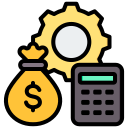
Tax Planning for Self-Employed Professionals
Chosen theme: Tax Planning for Self-Employed Professionals. Welcome to a friendly, practical guide built for freelancers, consultants, creatives, and solo entrepreneurs. Dive into real-world tactics, clear explanations, and relatable stories that help you keep more of what you earn—while feeling confident at tax time. Subscribe for weekly insights, and share your questions so we can tackle them together.


Lay the Groundwork: How Self-Employment Taxes Really Work
Self-employed taxes include income tax, self-employment tax for Social Security and Medicare, and state or local obligations. Seeing these clearly helps you price projects, avoid surprises, and approach every quarter with intention instead of guesswork and stress.
Lay the Groundwork: How Self-Employment Taxes Really Work
Quarterly estimates feel daunting until you treat them like predictable bills. Set calendar reminders, automate transfers, and calculate a conservative percentage of income. Consistency builds calm, protects cash flow, and keeps you away from last-minute scrambles and unnecessary penalties.
Deductions That Matter: Home Office, Gear, and Everyday Costs
A Home Office That Truly Qualifies
If you use a dedicated space regularly and exclusively for business, you may claim a home office deduction. Measure carefully, document usage, and choose the simplified or actual expense method. Consistent records help you claim confidently and answer questions if they ever arise.


Tools, Subscriptions, and Supplies You Actually Use
Cameras, laptops, software, samples, and reference materials can be deductible when used for business. Keep receipts, note business purpose, and track depreciation if relevant. Periodically prune subscriptions you don’t need, then reinvest those savings into tools that truly support your best work.
Retirement as a Tax Strategy: SEP IRA and Solo 401(k)
01
SEP IRA Simplicity
A SEP IRA is straightforward, with generous contribution limits tied to net earnings. Many solo professionals love the ease of setup and administration. Run projections before year-end, contribute strategically, and pair contributions with a consistent monthly investing habit for steady momentum.
02
Solo 401(k) Flexibility
A Solo 401(k) offers both employee and employer contributions, potentially allowing higher totals at lower income levels. Some plans even include Roth options. Decide based on your cash flow, record-keeping comfort, and growth goals, and revisit annually as your business income evolves.
03
Anecdote: The Photographer Who Built a Safety Net
Jon, a wedding photographer, dedicated a portion of every deposit to a Solo 401(k). Even during off-season months, the automated contributions continued. He reduced taxable income, created a cushion, and felt more confident saying no to underpriced gigs that drained his energy.
Make Sense of the QBI Deduction
The QBI deduction may allow eligible pass-through business owners to deduct up to twenty percent of qualified business income. It depends on taxable income, business type, and how profit is calculated. Clean books and consistent categorization make it easier to assess your eligibility confidently.

Cash Flow Systems: Buckets, Estimates, and Peace of Mind
Open a dedicated tax savings account and move a percentage of every payment the moment it arrives. Many solo pros start around thirty percent, then refine as data improves. Watching that balance grow transforms anxiety into assurance long before due dates appear.



Records That Stand Up: Receipts, Invoices, and Forms
Use a dedicated business bank account and card. Route every invoice payment there. Keep owner draws and transfers clearly labeled. When money and documentation match your story, deductions and financial decisions become easier—and your future self spends less time hunting for details.
Records That Stand Up: Receipts, Invoices, and Forms
Snap photos of receipts immediately, tag them by category, and note the business purpose in plain language. Cloud storage and accounting integrations help create a searchable trail. A fifteen-minute weekly habit now can replace hours of end-of-year chaos when deadlines squeeze everything.
